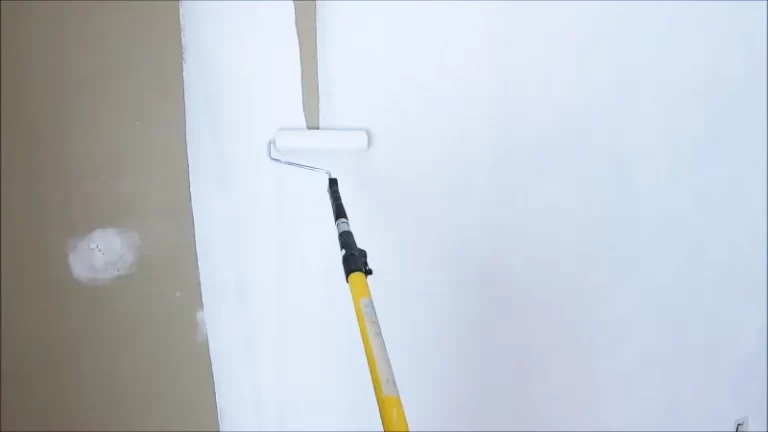How to Buy Paint: A Comprehensive Guide to Avoiding Costly Mistakes
Embarking on a new painting project can be exciting, but the process of buying paint can often feel overwhelming. Many homeowners find themselves standing in the paint aisle, confused by the vast array of options. This confusion can lead to common and costly mistakes, such as choosing the wrong type of paint for the job, buying too much or too little, or selecting a color that looks completely different on the wall than it did on the swatch.
The core of the problem often lies in a lack of foundational knowledge. Without understanding the key differences between paint types, finishes, and the importance of proper preparation, it’s easy to make a decision you’ll later regret. This guide will walk you through a step-by-step process, providing you with the knowledge and confidence to select the perfect paint for your project, ensuring a beautiful, long-lasting finish.
You'll Learn About
Understanding the Fundamentals: Paint Types and Finishes
Before you can choose a color, it’s crucial to understand the basic types of paint and their finishes. This knowledge is the bedrock of a successful paint job and will help you narrow down your options significantly. Making an informed decision here will save you from potential headaches like peeling paint in a high-moisture area or scuff marks in a busy hallway.
The two primary types of paint you’ll encounter are water-based (latex) and oil-based (alkyd). For most interior projects, water-based latex paints are the go-to choice due to their ease of use, low odor, and quick drying time. Oil-based paints, while more durable, have a strong odor and require mineral spirits for cleanup, making them better suited for high-traffic surfaces like trim and doors.
Decoding Paint Finishes (Sheen)
The paint’s finish, or sheen, refers to the amount of light it reflects. This not only affects the final look but also the paint’s durability and washability. Choosing the right sheen is just as important as the color itself. A higher sheen means more light reflection and greater durability.
Here’s a breakdown of the most common finishes, from least to most shiny:
- Flat/Matte: These finishes have no shine, which makes them excellent at hiding surface imperfections on walls. However, they are the least durable and can be difficult to clean, making them best for low-traffic areas like ceilings and adult bedrooms.
- Eggshell: With a very subtle, low-luster sheen, eggshell is a popular choice for many rooms. It offers a good balance of durability and a soft appearance, suitable for living rooms, dining rooms, and hallways.
- Satin: Satin finishes have a smooth, velvety look with a bit more shine than eggshell. They are more durable and easier to clean, making them a great option for high-traffic areas like family rooms, kids’ rooms, and even kitchens and bathrooms with good ventilation.
- Semi-Gloss: Highly durable and moisture-resistant, semi-gloss paint has a noticeable shine. It’s an excellent choice for kitchens, bathrooms, laundry rooms, trim, and doors—areas that require frequent cleaning.
- High-Gloss: The most durable and shiniest of all finishes, high-gloss paint is typically used for cabinets, trim, and doors to create a striking, reflective look. Its hard-wearing nature makes it perfect for surfaces that see a lot of wear and tear.
Choosing the Right Color: More Than Just a Swatch
Selecting a paint color is often the most exciting part of the process, but it’s also where many people make mistakes. A color that looks perfect on a small swatch in the store can appear dramatically different in your home due to lighting, existing furniture, and the sheer scale of a full wall.
To avoid “color shock,” always test your paint choices in the actual room you plan to paint. Purchase small sample pots of your top contenders and paint large swatches (at least 2×2 feet) on different walls. Observe how the color changes throughout the day as the natural light shifts. Don’t forget to see how it looks with your artificial lighting at night as well.
Considering the Room’s Function and Mood
Think about the purpose of the room and the atmosphere you want to create. Lighter colors can make a small room feel larger and more open, while darker, moodier shades can create a cozy and intimate atmosphere. Consider the existing elements in the room, such as flooring, furniture, and window treatments, and choose a color that complements them.
Don’t be afraid to step outside of a purely neutral palette. While beiges and grays are safe, adding a pop of color can bring personality and life to your space. If you’re hesitant to commit to a bold color on all four walls, consider an accent wall to introduce a vibrant hue without overwhelming the room.

Calculating How Much Paint to Buy
One of the most common questions homeowners have is, “How much paint do I need?” Buying too little can be a major inconvenience, while buying too much is a waste of money. Fortunately, calculating the right amount is a straightforward process.
As a general rule, one gallon of paint will cover approximately 350 to 400 square feet of a smooth, primed surface. To calculate the total square footage of the walls, measure the length of all the walls and multiply that by the height of the room. Subtract the square footage of any large windows or doors. Most paint can labels and online paint calculators can help you with this math.
Remember to factor in a second coat, as it’s almost always necessary for an even, professional-looking finish. It’s also wise to buy a little extra for touch-ups down the road. For significant color changes, such as painting a dark color over a light one or vice versa, you will likely need a primer and potentially more than two coats of paint.
| Room Size | Approximate Wall Square Footage (8 ft ceilings) | Estimated Paint Needed (for 2 coats) |
|---|---|---|
| Small (10′ x 10′) | 320 sq. ft. | 2 Gallons |
| Medium (12′ x 15′) | 432 sq. ft. | 3 Gallons |
| Large (15′ x 20′) | 560 sq. ft. | 3-4 Gallons |
The Importance of Preparation and Primer
Even the highest quality paint will fail if applied to a poorly prepared surface. Taking the time to properly prep your walls is the most critical step in achieving a professional and long-lasting paint job. This is not the place to cut corners.
Start by cleaning your walls with a mild detergent and water to remove any dirt, dust, or grease. For stubborn stains or in kitchens, a degreasing cleaner might be necessary. Once the walls are clean, rinse them with a damp cloth and allow them to dry completely.
Repairing Imperfections and Sanding
Next, inspect the walls for any imperfections. Fill any holes, cracks, or dents with a suitable filler. Once the filler is dry, sand it smooth so that it’s flush with the wall. For those dealing with more significant damage, such as a hole in the ceiling, it’s important to learn how to temporarily cover a hole in the ceiling before proceeding with a permanent fix and painting.
Lightly sanding the entire wall surface with fine-grit sandpaper will help the new paint adhere better. This is especially important if the previous finish was glossy. After sanding, wipe down the walls with a damp cloth to remove all the dust.
When and Why to Use Primer
Primer is an essential undercoat that creates a uniform surface for your paint to adhere to, ensuring better coverage and a more even color. You should always use a primer in the following situations:
- On new, unpainted drywall: New drywall is very porous and will soak up paint unevenly without a primer.
- When making a drastic color change: A tinted primer can help you achieve your desired color with fewer coats of paint.
- Over repaired or patched areas: Primer will seal the filler and prevent it from flashing through the topcoat.
- On glossy surfaces: A bonding primer is necessary to help the new paint stick to a slick, glossy finish.
- To cover stains: A stain-blocking primer will prevent stains from bleeding through your new paint color.
Choosing Quality Paint and Tools
When it comes to paint, you often get what you pay for. While it might be tempting to opt for a cheaper brand, investing in high-quality paint will save you time, effort, and money in the long run. Premium paints offer better coverage, durability, and a smoother application, often requiring fewer coats to achieve a beautiful finish.
The quality of your tools is just as important. A good quality brush and roller will make the painting process much smoother and yield better results. For cutting in around trim and corners, a 2.5-inch angled sash brush is a great choice. For rolling the walls, a 3/8-inch nap roller is suitable for most smooth surfaces.
Considering Special Paint Needs
Certain areas of your home have unique requirements that call for specialized paint. For example, bathrooms and kitchens are high-moisture environments where mold and mildew can be a problem. Look for paints specifically formulated for these areas, as they often contain antimicrobial agents to inhibit mold growth and are designed to withstand frequent cleaning.
If you have concerns about indoor air quality, consider using a low-VOC or zero-VOC (Volatile Organic Compounds) paint. VOCs are chemicals that can be released into the air and have potential health effects. Many brands now offer eco-friendly options that are better for both your home’s environment and the planet.
For unique projects, like ensuring your private spaces are well-protected from the elements, you might find yourself needing specialized knowledge. For instance, understanding the nuances of closet insulation can be crucial for temperature and moisture control, which can indirectly affect your paint’s longevity.
The DIY vs. Professional Painter Decision
With the right knowledge and preparation, many homeowners can achieve a professional-looking paint job on their own. DIY painting can be a cost-effective way to transform your space. The average cost to paint a room yourself can be significantly lower than hiring a professional, with the main expenses being the paint and supplies.
However, hiring a professional painter can be a worthwhile investment, especially for large or complex projects. Professionals have the experience, tools, and expertise to complete the job quickly and efficiently, with a flawless finish. The cost to hire a painter can vary depending on your location and the scope of the project, but it can save you valuable time and effort. In some cases, complex foundational work might also be required, such as knowing how to set a fence post in bedrock if your project extends to outdoor structures that are part of a larger renovation.
Final Checklist Before You Buy
To ensure you’re fully prepared for your trip to the paint store, run through this final checklist:
- Have you chosen your paint type (latex or oil-based)?
- Have you decided on the right finish for your room and its usage?
- Have you tested your color choices in your home’s lighting?
- Have you accurately measured your room and calculated the amount of paint needed?
- Have you determined if you need a primer and, if so, which type?
- Have you budgeted for high-quality paint and tools?
By following the steps and advice outlined in this guide, you can approach the paint-buying process with confidence. You’ll be well-equipped to avoid common pitfalls and make informed decisions that will lead to a beautiful, professional-looking paint job that you can enjoy for years to come. Happy painting!

